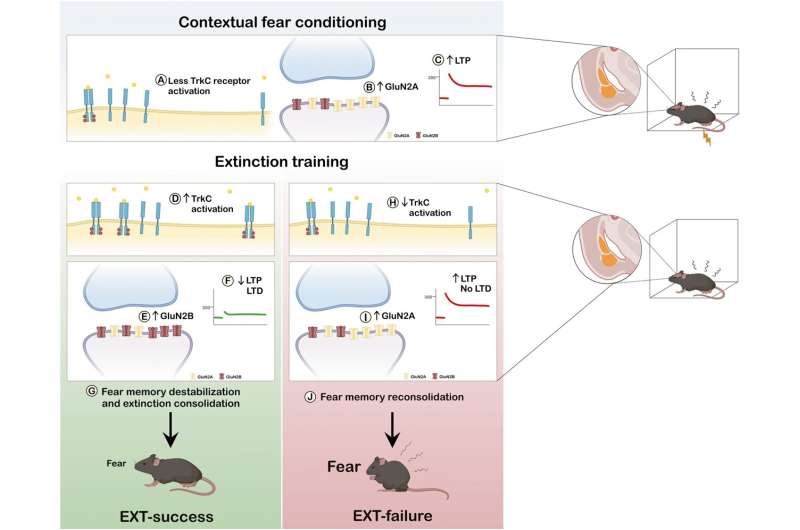This article has been reviewed according to Science X's editorial process and policies. Editors have highlighted the following attributes while ensuring the content's credibility:
fact-checked
peer-reviewed publication
proofread
Identification of molecule involved in fear extinction could lead to new therapies for anxiety

Researchers have identified a new mediator responsible for altering fear memories. This discovery could contribute to the creation of new and more effective therapies for the treatment of anxiety disorders, one of the most prevalent health conditions worldwide.
Fear-related disorders significantly affect the professional and social lives of individuals suffering from conditions associated with these disorders, such as panic disorder, post-traumatic stress disorder, and various phobias. These pathologies, characterized by exaggerated or inappropriate fear and a deficit in the extinction of fear, are highly prevalent worldwide and represent considerable governmental and societal costs.
Currently, one of the therapeutic options for anxiety disorders is exposure therapy, which is based on the fear extinction mechanism. However, neither these exposure therapies nor the use of drugs such as anxiolytics and antidepressants have proven to be 100% effective in treating these disorders.
Considering the relevance of this theme to mental health, a team of researchers led by Mónica Santos, from the Center for Neuroscience and Cell Biology at the University of Coimbra (CNC-UC), carried out a study using a behavioral model of fear extinction, assessing mice that successfully extinguished fear and those that failed.
The inter-individual differences in the ability to extinguish fear showed a dual outcome: first, on setting the vulnerability to develop anxiety and fear-related disorders; and second, on determining the effectiveness of exposure therapy toward patients in this group of disorders.
As uncovered in the article "The amygdala NT3-TrkC pathway underlies inter-individual differences in fear extinction and related synaptic plasticity," published in January in the journal Molecular Psychiatry, the researchers were able to identify an increase in the activation of the TrkC protein in the amygdala—the brain region that controls the fear response—at the stage of fear extinction memory formation, which leads to an increase in synaptic plasticity, i.e., the ability of neurons to change the way they communicate with each other depending on the stimuli they receive.
According to Santos, "This study has validated the TrkC pathway as a potential therapeutic target for individuals with fear-related disorders," emphasizing that "combining exposure therapies with drugs that enhance synaptic plasticity may represent a more effective and lasting way of treating anxiety disorders."
The research team intends to continue working to "identify compounds that have the ability to specifically activate the TrkC molecule and thus be used as drugs allied to exposure therapy in the treatment of patients with anxiety disorders," says Santos.
More information: Gianluca Masella et al, The amygdala NT3-TrkC pathway underlies inter-individual differences in fear extinction and related synaptic plasticity, Molecular Psychiatry (2024). DOI: 10.1038/s41380-024-02412-z




















